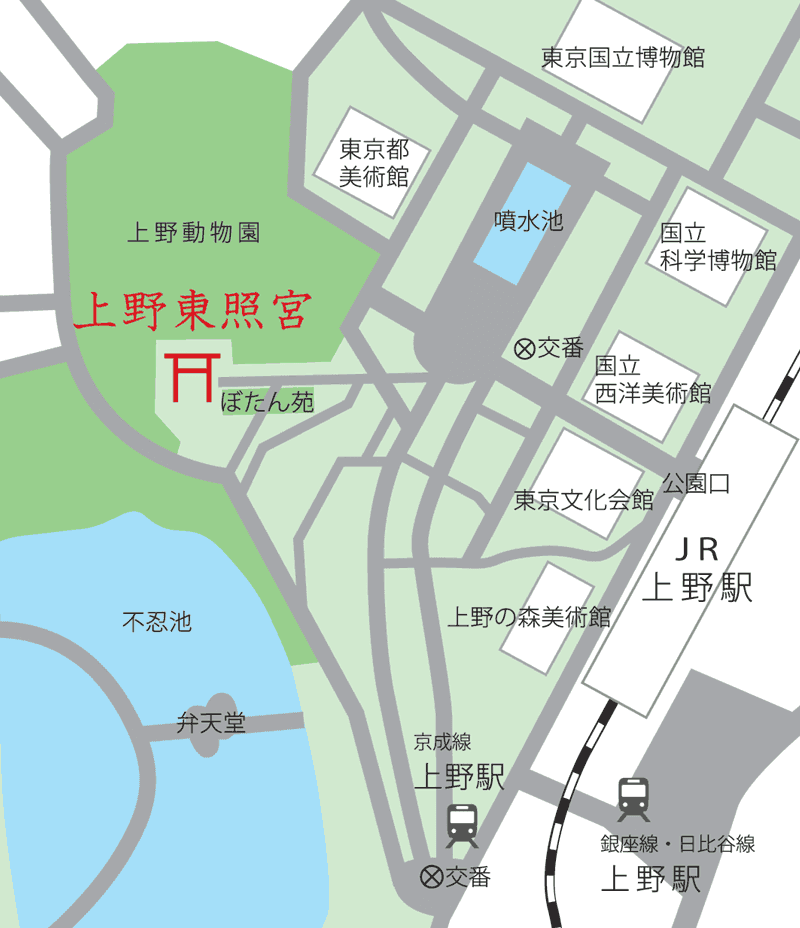- Information
- About Ueno Toshogu Shrine
- Sukibei Wall
- Karamon (Chinese style gate)
- Shrine structure
- Peony garden(Botan-en)
- Admission Charge
Information
About Ueno Toshogu Shrine
Ueno Toshogu is a shrine in the time honored Japanese religion of Shinto and was built and dedicated in 1627 to the memory of Tokugawa Ieyasu (1542 - 1616), the founder of the Tokugawa Shogunate. The Tokugawa Shogunate, having unified all of the feudal domains of Japan, formed the basis of rule for the next 265 years in what came to be known as the Edo period. This accomplishment makes Tokugawa one of the most famous warriors throughout Japanese history, and his reputation as a prudent and patient leader is still respected among Japanese today.
The main structure of this shrine was rebuilt in 1651 by Tokugawa Iemitsu, the 3rd Tokugawa Shogun and grandson of Ieyasu, and serves as an example of an architectural style representative of the Edo period: gongen- zukuri.
Despite major earthquakes and wars, the structure has remained intact, and has been designated as an important cultural property of Japan due to its representative nature of the Edo period. Many people from all over the world visit the shrine in order to experience true Edo period architecture. Though visiting the shrine itself is free of charge, there is a paid route within its wall(500yen). Visitors are not allowed into the main hall of the shrine, but as people can closely inspect and appreciate its traditional architecture and take pictures, the shrine has become a popular attraction. It’s gorgeous buildings are trimmed in gold leaf and contain beautifully intricate carvings. Visitors are moved by the classic beauty of the traditional structure.
There are also a great number of people who come to pray for a number of reasons such as good fortune; passing examinations; vocational success; longevity; and recovery from illness. Ieyasu is believed to now be a powerful deity that visitors can pray to at this shrine for good luck.
In addition to Ieyasu, the 8th Shogun, Tokugawa Yoshimune, and the 15th and final Shogun, Tokugawa Yoshinobu, are also enshrined at Ueno Toshogu.
Popular souvenirs among foreign tourists from the shrine include charms for good luck, happiness, or longevity as well as amulets in the shape of old medicine boxes known as Inro.
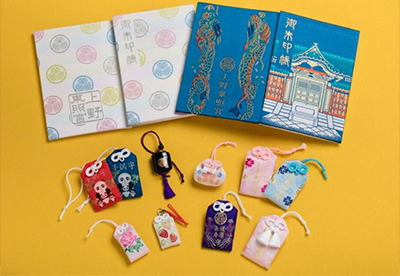
Other fun activities include writing a wish on a small wooden plaque(Ema) and hanging it among the wishes of other visitors, and buying a fortune slip(Omikuji).We have also Omikuji in English. Both are a great way to make lasting memories while visiting the shrine.
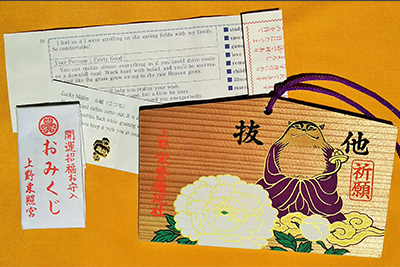
Sukibei Wall
The Sukibei Wall, which surrounds the shrine building, was built in 1651. The upper part of the wall is decorated with carvings of land creatures. The lower part of the wall is adorned with carvings of sea and river creatures. On the wall you can find animals that exist in the real world, such as wild animals, birds, fishes, frogs, shellfish, butterflies, and mantis. You can also find mythical creatures as well.
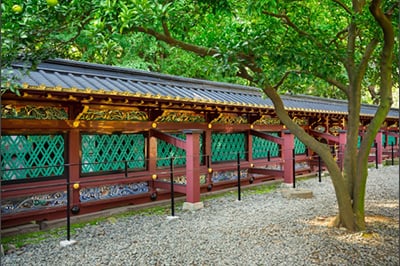
Karamon (Chinese style gate)
The Karamon was built in 1651.Gold foil as well as hand curved flowers and birds ornately decorate the doors and both sides of the gate. Two dragons are curved on the gate pillars that stand on both sides of the Karamon. They are known as Ascending dragon and Descending dragon.
Legend has it that every night two dragons visit the Shinobazu-no-ike Pond to drink from its water.
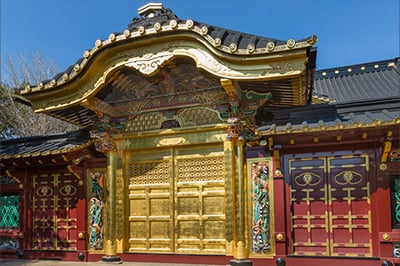
Shrine structure
The shrine structure was built in 1651.Corridors surround the hall on three sides. All the pillars and doors are covered in gold foil. The ceilings are decorated with lacquer and colorful carvings. The interior of the shrine building is closed to the public. This is for the protection and preservation of this Japanese cultural treasure.
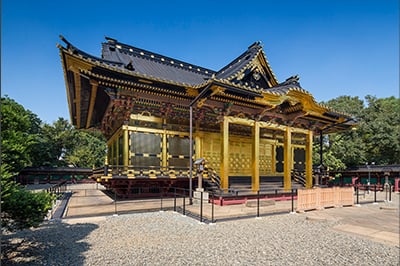
Peony garden(Botan-en)
Every year between New Year's Day through mid-February and mid-April through mid-May, Peony Garden (Bontan-en) is opened.(entrance fee:700yen/per person) Peony Garden was founded in April 1980 to mark the Japan-China friendship. The peony originates from China. Since ancient times, it has been known as the “King of the Hundred Flowers”, so widely familiar with medical and ornamental plants. It is also called the “noble and wealthy” flower, and attracts widespread popularity as a blessed flower that brings people wealth, prosperity, fame and fortune. It is said that the peony was introduced to Japan during the Nara period. Then, it was cultivated mainly at the imperial court and temples. However, it was the Edo period that various types were produced, when the gardening culture was just commonalized among the ordinary people. The peony’s popularity is clear with many references in Japanese haiku and common uses as a motif in art, patterns and family emblems.
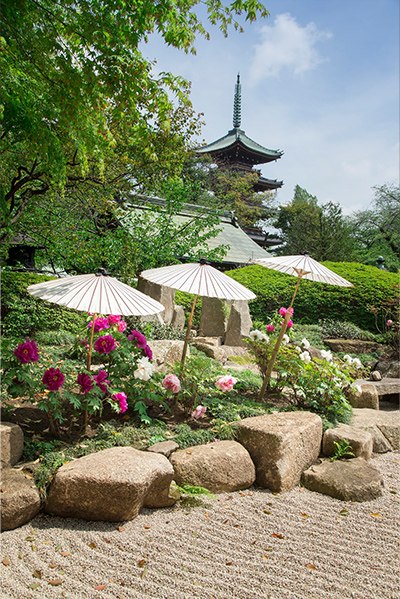
Admission Charge
outside of the wall
free
Admission to the inside of the wall
-
Adult(over13years old)
500yen
-
Groups of over 20 people
400yen per person
-
6~12 years old
200yen
-
Under 6years old
Free
Shrine and peony garden
1100yen(adult)
<No credit card>
Open
9am
Close
Winter season(Oct.-Feb.)4:30pm
Summer season(Mar.-Sep.)5:30pm
Address
9-88Ueno Koen,Taito-ku,Tokyo,Japan
Tel
+81 3 3821 3455
Access
-
JR(yamanote line,keihintohoku line)
Ueno station park exit,
-
Tokyo metro(Ginza line, Hibiya line)
Ueno station shinobazu exit,
-
Keisei Line
Ueno station shomen exit
